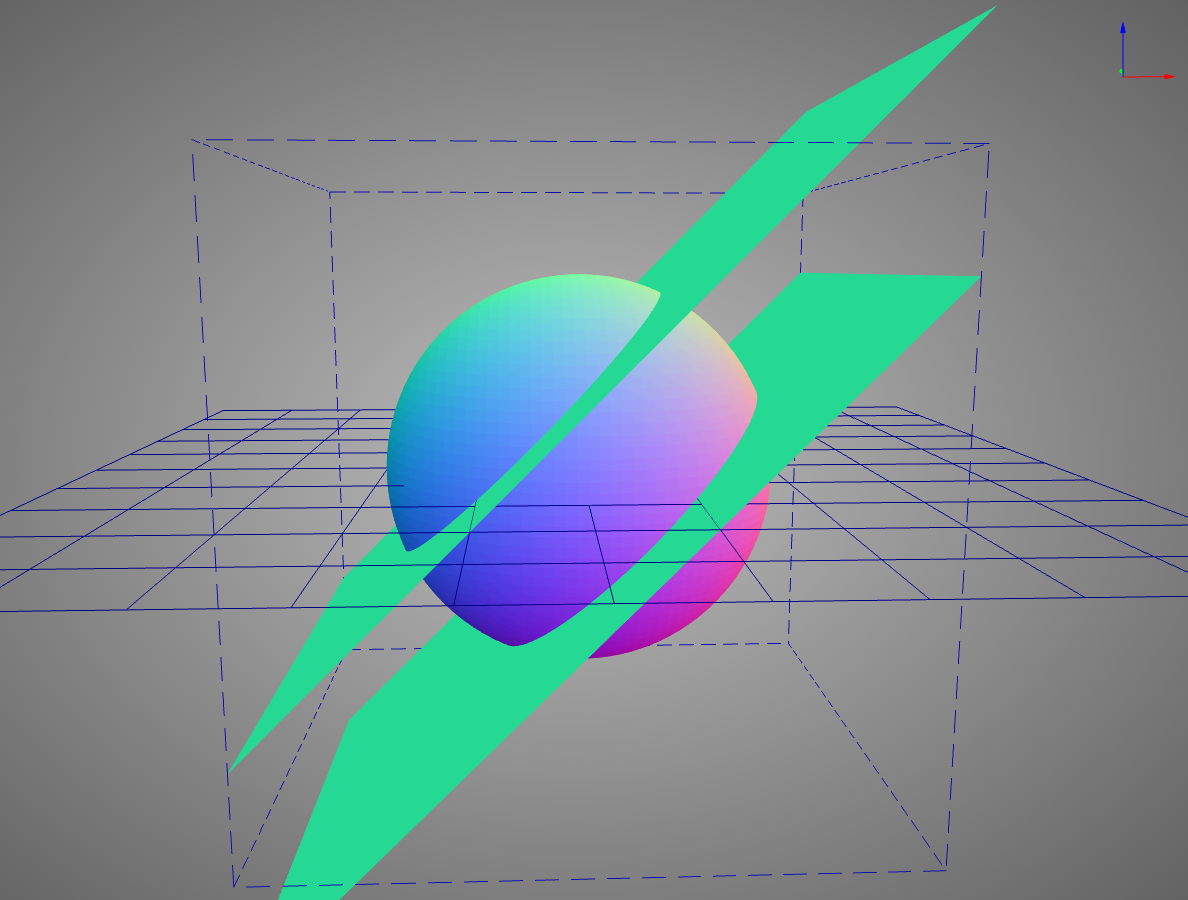Help: Sphere Intersecting Two Planes and the Volume Between
Here is a problem I was busy trying to find a solution for, for about the past half hour:
In the x-y-z space, the following equations are graphed:
\(x^{2}+y^{2}+z^{2}=4\)
The space looks as follows:

What percent of the sphere's volume is between the two graphed planes and ?
No vote yet
1 vote
Easy Math Editor
This discussion board is a place to discuss our Daily Challenges and the math and science related to those challenges. Explanations are more than just a solution — they should explain the steps and thinking strategies that you used to obtain the solution. Comments should further the discussion of math and science.
When posting on Brilliant:
*italics*or_italics_**bold**or__bold__paragraph 1
paragraph 2
[example link](https://brilliant.org)> This is a quote# I indented these lines # 4 spaces, and now they show # up as a code block. print "hello world"\(...\)or\[...\]to ensure proper formatting.2 \times 32^{34}a_{i-1}\frac{2}{3}\sqrt{2}\sum_{i=1}^3\sin \theta\boxed{123}Comments
The distance between these two planes is 2. We could have picked, for example, planes x=22 and x=−22 and the effect would be the same. This is the consequence of the properties of sphere itself - it is symmetric. Hence, using disk method, we write: ∫−2222(4−x2)π dx=π[4x−3x3]−2222=π(22−122−(−22+122))=π(42−1222)=6232π..
Thus, the percent of sphere's volume between the planes is: 3423π6232π=64232=.508232....
Just for fun, here's a Monte Carlo integration solution:
1) Generate lots of points randomly and uniformly within a cube circumscribing the sphere. Keep a count of the number of points generated.
2) Keep a count of the number of points which lie within the sphere and between the two planes
3) The "sandwiched" volume is the cube volume multiplied by the ratio of the two counts
4) Compare the sandwiched volume to the sphere volume
You can see that Monte Carlo integration with a million points generates a solution almost identical to that yielded by the formal approach. In exchange for lots of computation, we didn't need to consider anti-differentiation, or even Riemann sums. Just a counting exercise